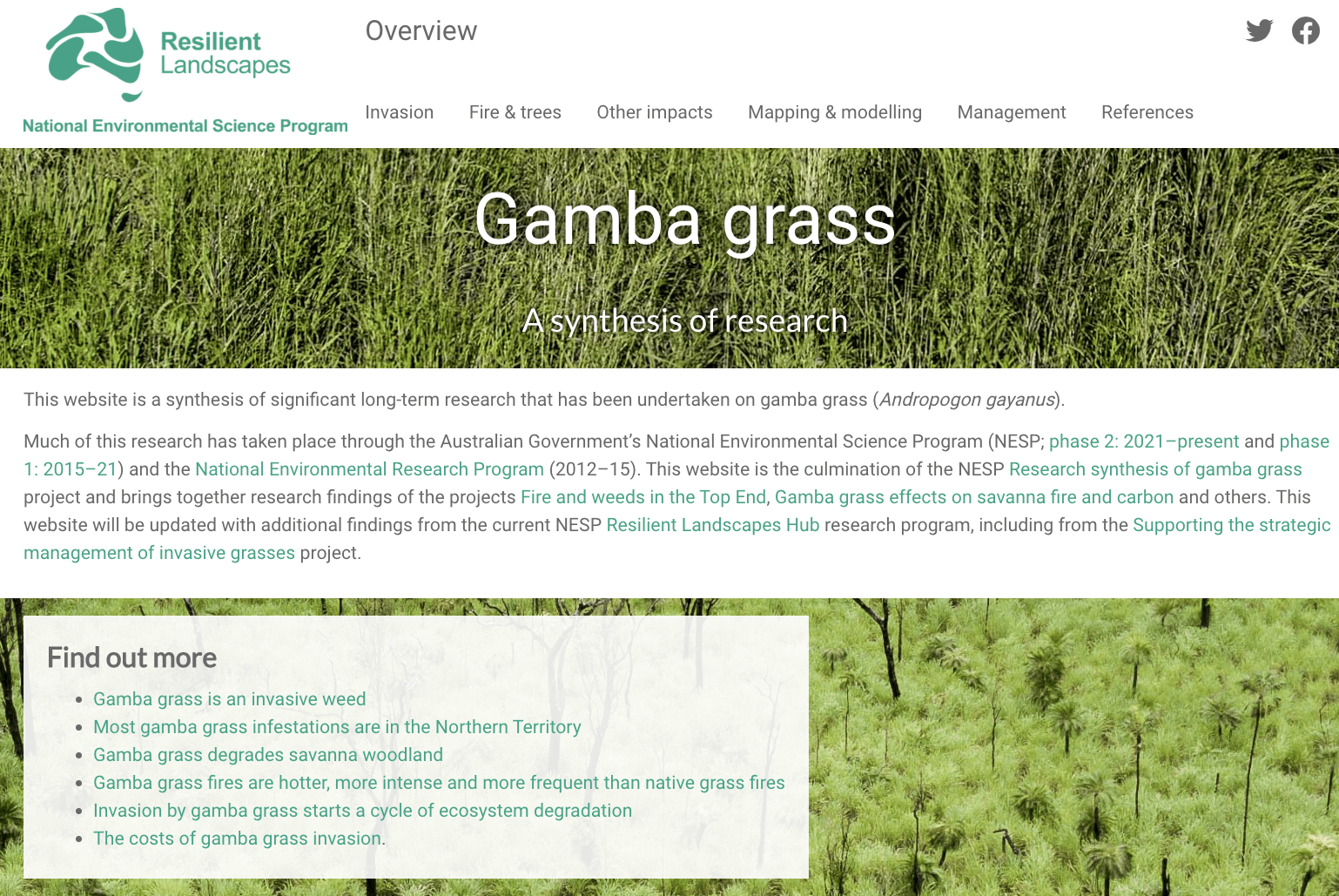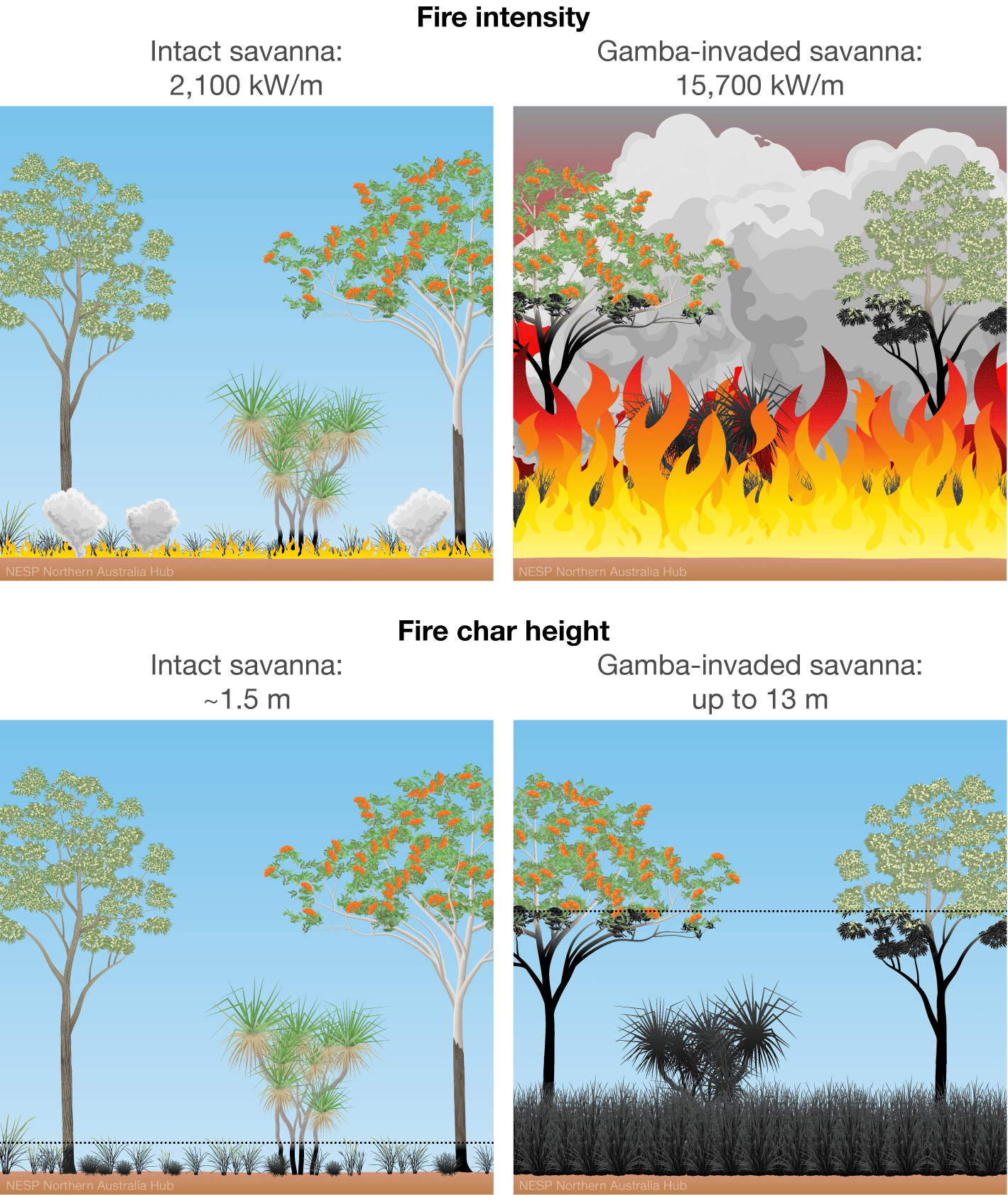While our research outputs are always co-designed with key research users to meet their needs, our mandate to make outputs and resources publicly available means that other decision-makers and land managers can access the hub’s research and use it to make evidence-based decisions – both now and in the future.
We are also committed to empowering others to communicate science better by developing and providing resources to hub researchers and others with the goal of elevating science communication and making it credible, accessible and relatable.
More than 2 decades of research into the invasive weed gamba grass has been showcased in a new website. Research funded by NESP and its predecessors has helped land managers better understand the scale of the gamba problem, the serious threat it poses to biodiversity and how research can support successful gamba management approaches.
Data, maps, photos, drone footage, videos, animations and diagrams are used throughout to present the research in informative and easy-to-understand ways. This is a ‘living’ website, meaning it will be updated with findings from current and future research into this high-priority weed. It’s critical that this research synthesis be publicly available for posterity, so the ArcGIS Hub site platform was chosen because it is free and will be hosted in perpetuity through the University of Western Australia’s organisational account.
Fantastic resource for those who care about Country and culture.

The new website synthesises long-term research into the weed gamba grass.
We continue to develop and make freely available our symbol library. It now contains more than 200 symbols which are being used by more than 1,000 people. Reflecting the hub’s national scope and informed by hub project needs, the library is being expanded to include people, plants and animals from across Australia.
The symbols are used in diagrams throughout the gamba grass synthesis website to communicate NESP research findings in clear and accessible ways. A survey of symbol users showed widespread support for the research by hub researchers, stakeholders and others, with 95% of users saying the symbols will be useful, very useful or extremely useful.
It’s an incredible resource and I hope it keeps growing. The symbols are of such high quality and can be used in so many ways!
– Supervising Scientist Branch, Australian Department of Climate Change, Energy, the Environment and Water
Our team at TJC find it useful in getting across some of our ideas, particularly in relation to Caring for Country and Indigenous land and sea management and access.
– Terri Janke and Company, 100% Indigenous owned and run law firm whose expertise includes Indigenous Cultural and Intellectual Property (ICIP) and delivery of True Tracks® ICIP training.

Graphics such as the one above, used in the Fire and trees page of the gamba grass synthesis website, use the hub symbols to clearly communicate research findings. Image: NESP Resilient Landscapes Hub and Northern Australia Environmental Resources Hub.